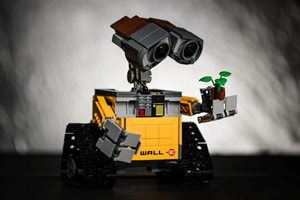Can software robots help businesses to achieve their sustainability goals?

Gavin Mee, managing director for Northern Europe at enterprise automation firm UiPath, reveals that software robots can support green solutions and, when implemented at scale, could help to significantly reduce a business’ carbon footprint while boosting its efficiency.
At first glance, “green” and “robot” may not seem a natural pairing. One suggests a conscious lifestyle and the other can paint a picture of overconsumption. However, with the growing popularity of disruptive technologies such as Robotic Process Automation (RPA), the ‘green’ robot is no longer the oxymoron it first seems.
Before considering how a robot can be green, it’s worth explaining RPA a little further. In simple terms, software robots can emulate the way humans use every-day software. They can virtually control a computer, mouse and keyboard to read, extract and process data completing rule-based and repetitive tasks more quickly and accurately than an employee can.
Just as some businesses are using the technology to combat barriers, such as a lack of time or process inaccuracies, organisations can tap into the technology to help meet their sustainability goals. It’s this innovation that sits at the core of the concept of ‘the green robot’.
By introducing software robots into a business, higher levels of efficiency and digital modernisation can be achieved, helping to reduce both physical and digital waste. While RPA isn’t the golden ticket to a greener world, if implemented at scale it can certainly set companies on the right track through innovation and improved efficiency.
Automation speeds up green initiatives
With the assistance of software robots, new, innovative green solutions can be created. Let’s take the example of smart meters. The technology supports sustainability goals by allowing users to monitor and thus cut back on their energy consumption, all while energy providers can tap into this data to make more informed, less wasteful, buying decisions.
Additionally, the store of data is a goldmine when considering how to make the energy sector more efficient, but the sheer volume makes processing data quickly and efficiently difficult to do with without tech support. When software robots are introduced, they can read and extract the data in moments, relaying and structuring the information as needed, often in near real-time. This allows for greater efficiency within forecasting, demand and supply management, and energy trading, consequently allowing for greener solutions to form.
Such innovation is already supporting a variety of green-focused initiatives around the world. For example, in the Czech Republic, automation was used to speed up the provision of green boiler grants to 1.2million people in the Moravian-Silesian region, improving the air quality in surrounding areas.
Reducing the carbon footprint with software robots
Software robots can also make business operations more sustainable themselves.
Often the first step of an automation journey is process mining, where software extracts data about what happens in a process and when and translates this into visual workflows. It allows organisations to literally see where the bottlenecks and inefficiencies lie. With this full view, they can be in a position to begin transforming how they work and cutting out the wastefulness that contributes to the over-use of resources.
Once the most efficient way of carrying out processes is identified through process mining, software robots can be integrated into workflows to further reduce the carbon footprint. For example, at UiPath we have integrated software robots into our IT department. By creating a Centre of Excellence for IT operations, including the introduction of a self-service IT chatbot, the department was able to significantly optimise its infrastructure and as such reduce its yearly compute energy footprint by 65%.
Slashing paper usage with automation
Optimising processes isn’t the only solution overhauling those once reliant on physical resources can also significantly cut waste and improve efficiency. Consider that the average office worker uses 10,000 sheets of paper a year, wasting 6,800 of them. If all of these were from new sources, that would require over eight trees and almost 2,000kWh of energy.

Gavin Mee
One infrastructure solutions firm has in part tackled this problem by automating the handling of 400,000 invoices a year. Rather than using paper, ink and energy to print, sign and scan an invoice, a robot can now simply do all of this digitally and at a far greater speed potentially saving the company 320 trees and 80,000kWh a year.
By understanding how software robots could improve efficiencies across departments, organisations can reduce both their digital and physical resource consumption alongside the other significant benefit of supplementing their workforce with software robot assistants.
Of course, while RPA alone software cannot achieve often multi-layered corporate green initiatives, software robots do provide opportunities to create or improve innovative solutions while offering a more general opportunity to reduce inefficiencies and waste.
The author is Gavin Mee, managing director for Northern Europe at enterprise automation firm UiPath.
Comment on this article below or via Twitter @IoTGN
